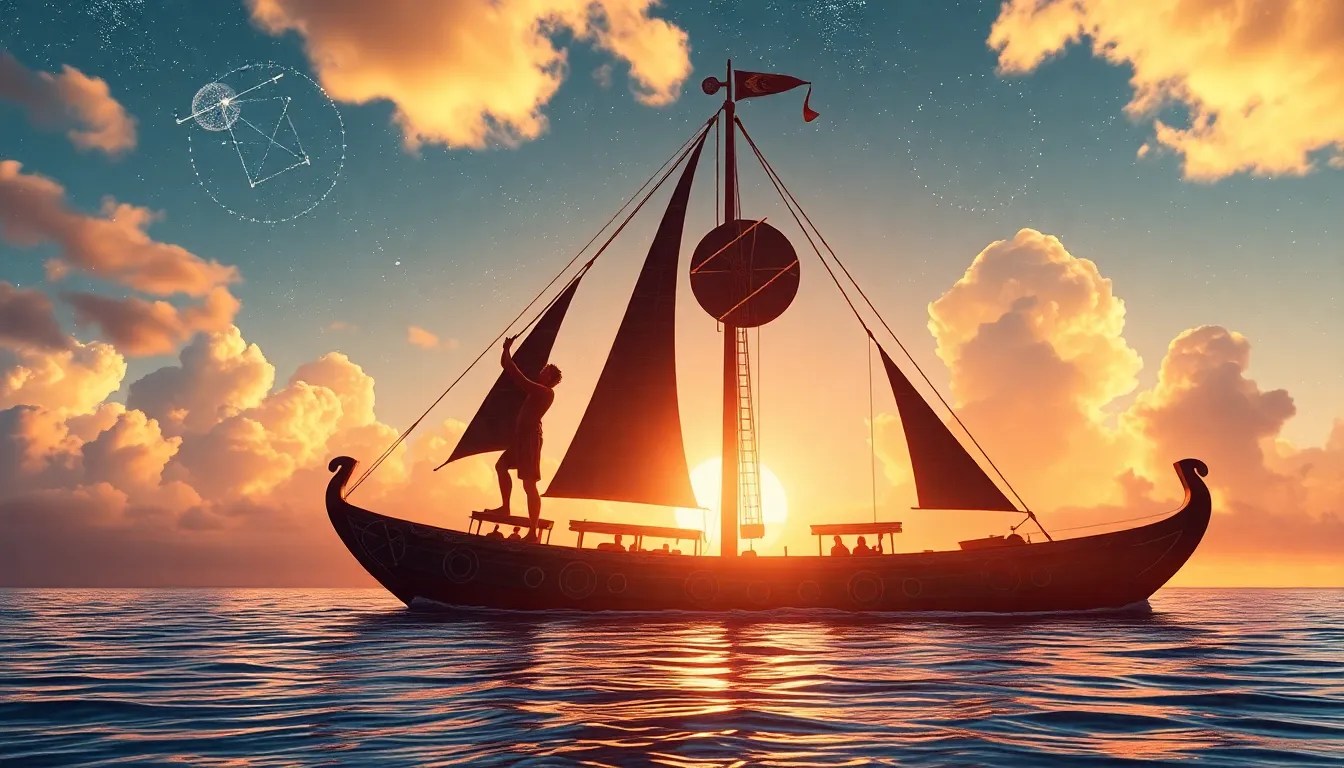Beyond the Horizon: Celestial Myths That Shaped Polynesian Navigation
I. Introduction
Polynesian navigation is a remarkable art that has allowed the peoples of the Pacific Islands to traverse vast ocean distances for centuries. Utilizing a combination of environmental cues and celestial guidance, navigators were able to explore and settle islands across a daunting expanse of water. Central to this practice was celestial navigation, which relied heavily on the stars, the sun, and the moon.
In Polynesian culture, the night sky served not only as a guide for seafarers but also as a canvas for stories and myths that shaped their understanding of the world. This article explores the celestial myths that influenced Polynesian navigation practices, highlighting their cultural significance and practical applications.
II. The Significance of Stars in Polynesian Navigation
The night sky holds profound meaning in Polynesian culture, serving as a celestial map for navigators. The stars are not just points of light but are imbued with stories and meanings that guide voyagers on their journeys.
- Key Constellations: Some of the most important constellations include:
- Te Punga: This constellation represents a mythical anchor and is often used for directional purposes.
- Ngā Kurukuru: Known as the ‘Waka’ or canoe, it is crucial for navigating across the ocean.
- Te Tahi o Te Ika: The ‘First of the Fish’ is associated with the ocean’s bounty and guides fishermen.
The celestial bodies not only provided physical guidance at sea but also influenced the spiritual beliefs of the navigators, reflecting their deep connection to the cosmos.
III. Mythical Figures and Their Influence on Navigation
Polynesian mythology is rich with deities and figures that embody the essence of the sea and navigation. These mythical beings are integral to understanding how navigators viewed their relationship with the ocean.
- Kanaloa: The god of the ocean, Kanaloa is often invoked for safe passage and favorable winds. His teachings are vital for navigational success.
- Ku: A deity associated with war and agriculture, Ku also has aspects related to navigation, symbolizing strength and resilience on the open sea.
These figures provided not just a spiritual framework but also practical guidance, inspiring navigators to undertake their voyages with confidence.
IV. The Creation of the World and Its Navigation Implications
Polynesian creation myths offer insight into the relationship between land and sea, illustrating how the cosmos and navigation are intertwined. Many stories describe the formation of islands and their positions relative to celestial bodies.
For instance, in some myths, the emergence of land was guided by the stars, suggesting that the very act of navigation was part of a divine plan. This relationship emphasizes the importance of celestial navigation in reaching new islands, making the myths not only stories but essential navigational teachings.
V. Navigational Techniques Derived from Celestial Myths
The practical application of celestial myths is evident in the navigational techniques used by Polynesians. Navigators relied on a variety of celestial bodies:
- The Sun: Used to determine direction during the day, with its position in the sky serving as a compass.
- The Moon: Its phases helped navigators understand the tides and time their journeys.
- Stars: Specific stars were followed for their positions at certain times of the year, providing reliable routes across the ocean.
Traditional methods included observing the rising and setting of stars, as well as understanding weather patterns, all of which were encoded in the myths passed down through generations.
VI. The Role of Oral Tradition in Preserving Celestial Knowledge
Oral tradition is a cornerstone of Polynesian culture, serving as the primary means of transmitting knowledge, including navigational skills. Storytelling played a crucial role in preserving the celestial knowledge necessary for navigation.
Through tales of gods, heroes, and celestial events, navigational knowledge was imparted to younger generations. Examples of such myths include:
- The story of Maui pulling islands from the sea, which teaches about the relationship between land and navigation.
- The journeys of ancestral navigators who followed the stars, inspiring future voyagers to honor their heritage.
These narratives not only convey techniques but also instill a sense of identity and purpose in navigators.
VII. Modern Interpretations of Celestial Myths in Navigation
In contemporary times, there has been a revival of traditional navigation techniques, with many Polynesians returning to their roots. This renaissance has sparked interest in how celestial myths continue to influence modern explorers and navigators.
Case studies of successful voyages, such as those undertaken by the Polynesian Voyaging Society, highlight this revival:
- The Hōkūleʻa voyage, which used traditional navigation methods, showcased the enduring nature of celestial knowledge.
- Modern navigators, inspired by ancient myths, have successfully retraced the paths of their ancestors, emphasizing the relevance of these stories today.
VIII. Conclusion
The intricate relationship between mythology and navigation in Polynesian culture reveals a deep respect for the cosmos and its guidance. Celestial myths not only shaped navigational practices but also fortified cultural identity and heritage.
As we explore and honor the navigational heritage of Polynesia, we are reminded of the enduring legacy of these celestial myths. They continue to inspire and guide modern navigators as they embark on their journeys across the vast Pacific Ocean.
We encourage all to delve deeper into the rich tapestry of Polynesian navigational history and to respect and celebrate the wisdom of the ancestors that has been passed down through generations.



